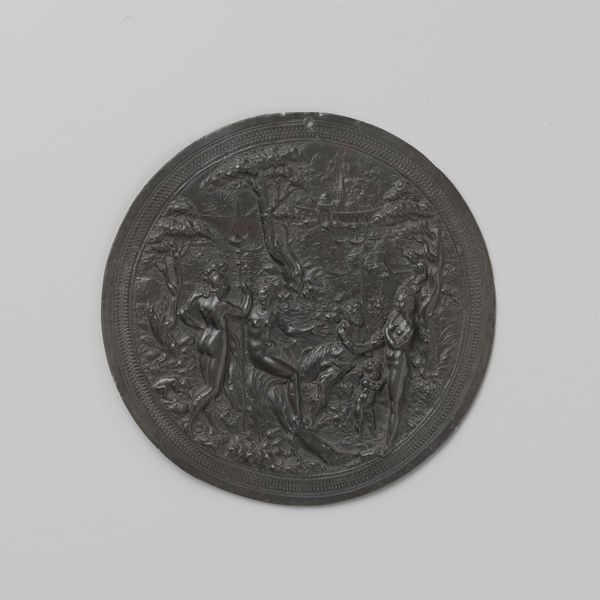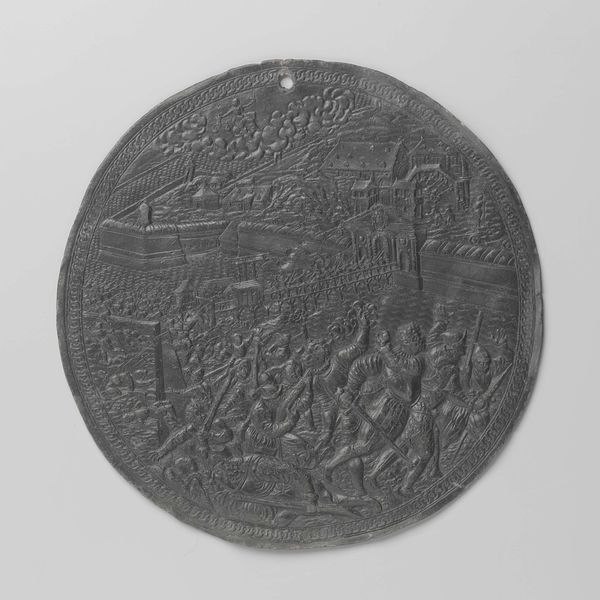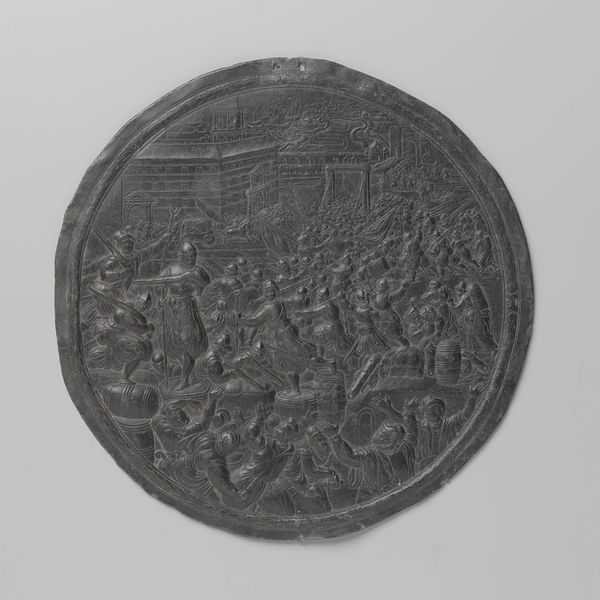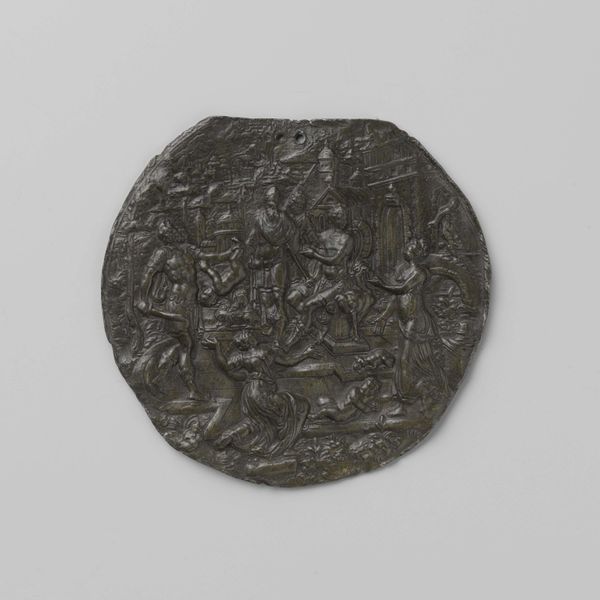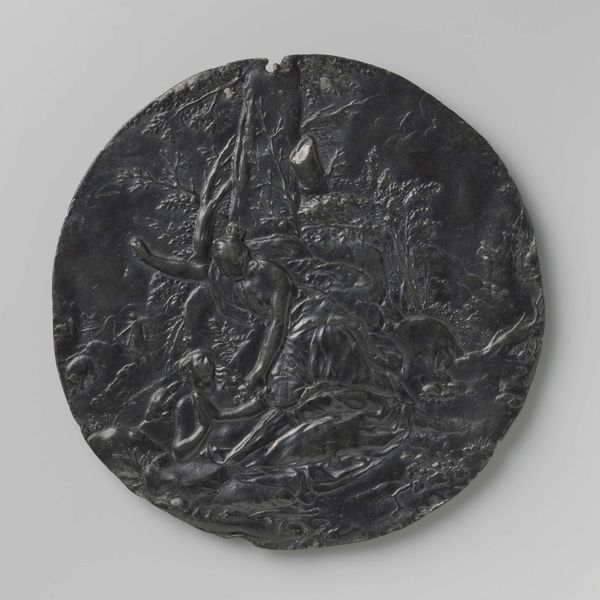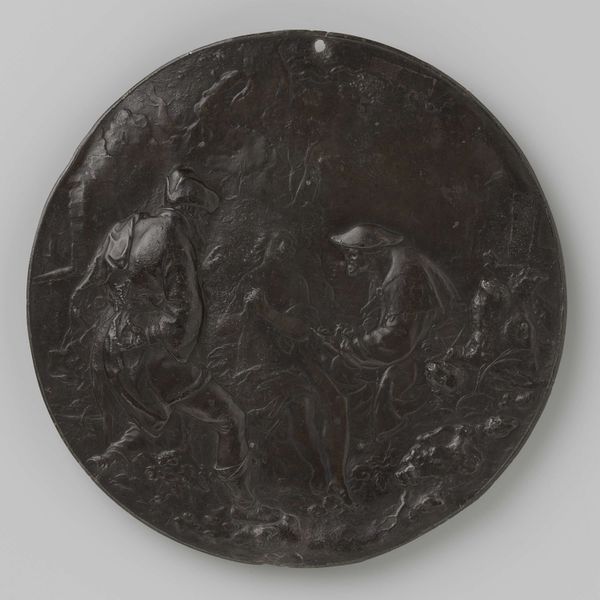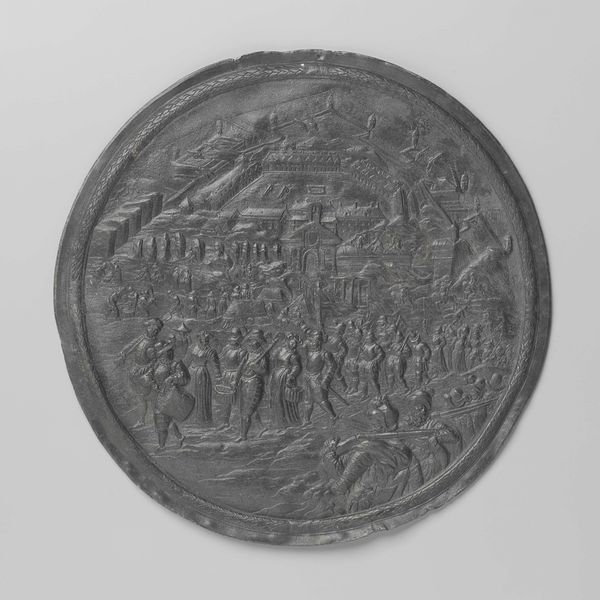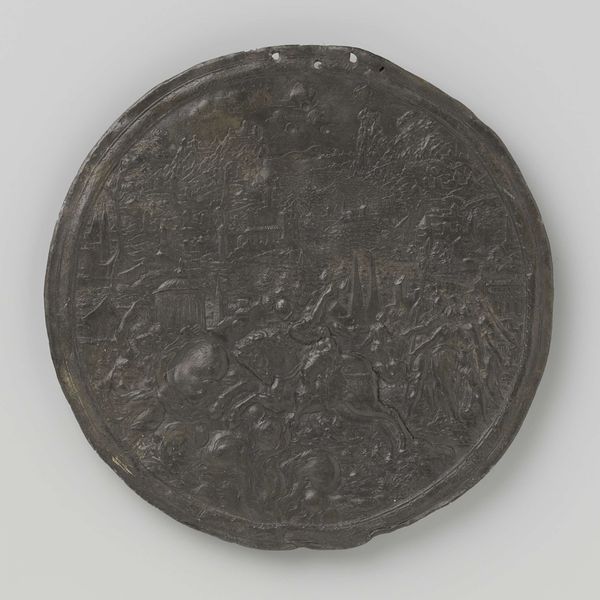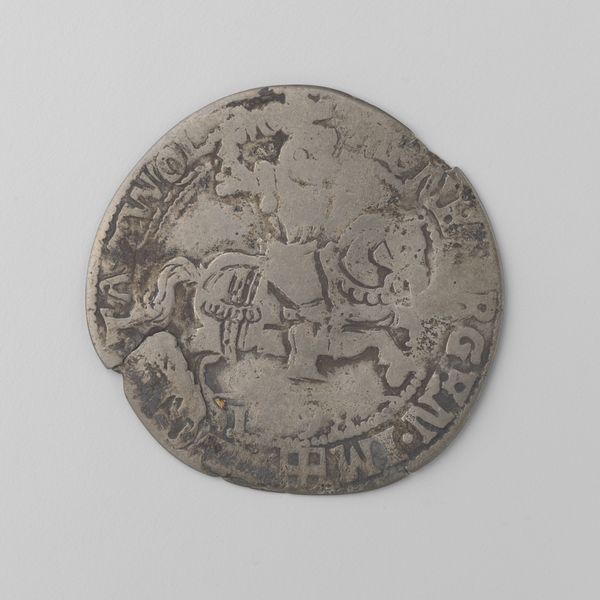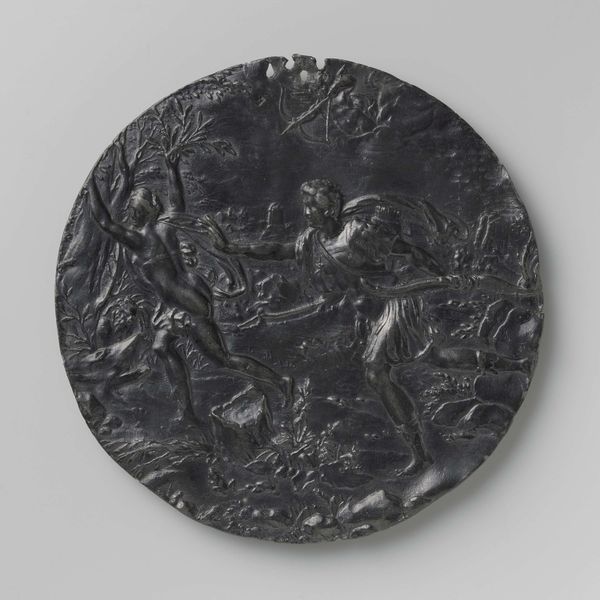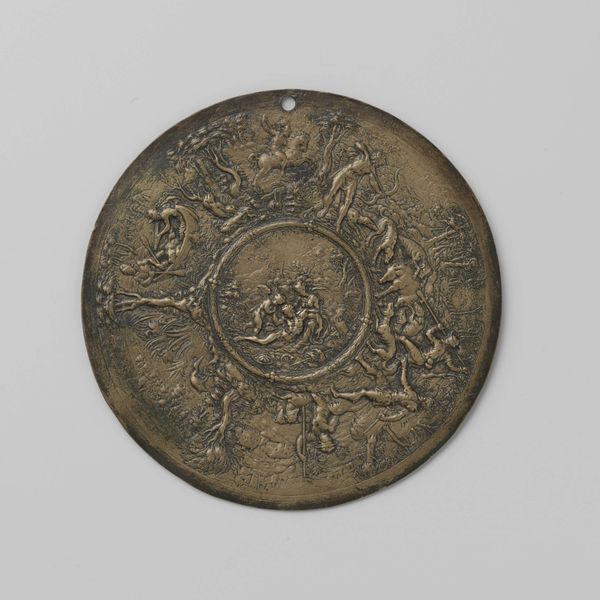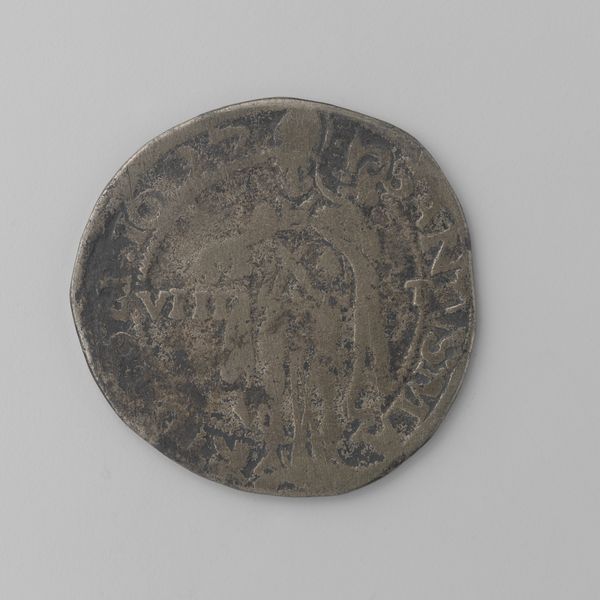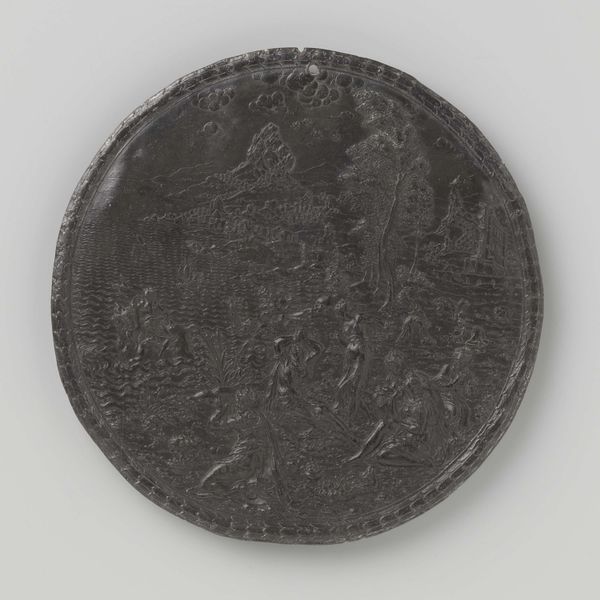
metal, relief, sculpture
#
allegory
#
metal
#
sculpture
#
relief
#
landscape
#
mannerism
#
figuration
#
11_renaissance
#
sculpture
Dimensions: diameter 16.3 cm, weight 297 gr
Copyright: Rijks Museum: Open Domain
Editor: Here we have Paulus Willemsz. van Vianen's "Venus and Adonis," made around 1600. It's a metal relief sculpture currently held at the Rijksmuseum. The scene feels very contained and classical, but also somewhat tragic, knowing their story. How do you interpret this work? Curator: What strikes me is how this small, portable metal relief encapsulates larger power dynamics at play during the Renaissance. It depicts a mythological scene, certainly, but consider its socio-political context. The male gaze is unavoidable, particularly when understanding Venus’s position, doesn't it strike you as presented for consumption? Who do you think was the intended audience? Editor: I suppose wealthy patrons, familiar with classical mythology. They might have enjoyed it simply for its beauty and the story it tells? Curator: Indeed. But art never exists in a vacuum. The story of Venus and Adonis, reduced here to a romantic landscape, is fraught with danger, desire, and ultimately, death, because Adonis will soon face a gruesome death while hunting. Do you notice how the overall circular composition can almost trap both Venus and Adonis in the landscape? It almost evokes a sense of confinement for them as they anticipate their dark fate, where they seem to lack any control over what will occur. Consider then how that power dynamic resonates within the patronage system itself, and larger structures of power during that era? Editor: I never considered the darker themes lurking within what seems like a beautiful artwork. It seems the patron here might play a subtle but not insignificant role too. Curator: Precisely! By possessing this artwork, the patron is engaging with these ideas of power, desire, and even mortality in a very active way. They controlled this narrative in the same manner that Adonis' life was tragically controlled. Editor: That's a fascinating perspective! It really makes you think about the layers of meaning embedded within the work. Curator: And that is the power of art - it makes us question, challenge, and re-evaluate. It forces us to address the questions about our relationship with art as historical reflection in the contemporary context.
Comments
No comments
Be the first to comment and join the conversation on the ultimate creative platform.
